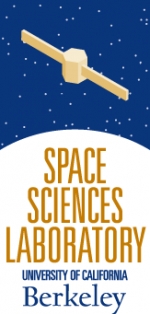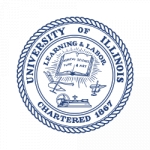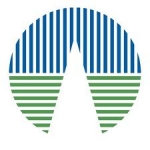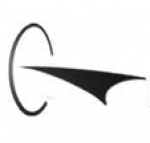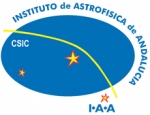Displaying items by tag: research center
Space Sciences Laboratory (SSL)
The Space Sciences Laboratory (SSL) is an Organized Research Unit of the University of California, Berkeley.
It is located in the Berkeley Hills above the university campus. It has developed and continues to develop many projects in the space sciences.
SSL developed and maintains the SETI@home project which pioneered the application of distributed computing to the space sciences.
It created the related projects Stardust@home and BOINC.
It is home to the Space Physics Research Group, which does Plasma physics research.
It has developed many satellite missions and serves as a ground station for those missions. Some of the satellites it has developed are:
- The Reuven Ramaty High Energy Solar Spectroscopic Imager (RHESSI) satellite
- The Time History of Events and Macroscale Interactions during Substorms (THEMIS) satellite constellation
- The Fast Auroral Snapshot Explorer (FAST)
- The Cosmic Hot Interstellar Plasma Spectrometer (CHIPSat)
- The Extreme Ultraviolet Explorer (EUVE)
- The Infrared Spatial Interferometer (ISI)
SSL does science education outreach via the Center for Science Education (CSE).
University of Illinois at Urbana-Champaign
The University of Illinois at Urbana–Champaign is a public research-intensive university in the U.S. state of Illinois.
It is the flagship campus of the University of Illinois system. The University of Illinois at Urbana–Champaign is the second oldest public university in the state (after Illinois State University), and is a founding member of the Big Ten Conference.
Max Planck Institute for Solar System research (MPS)
The Max Planck Institute for Solar System Research (MPS) is a research institute in Astronomy / Astrophysics, located in Lindau (Katlenburg-Lindau), Germany.
The exploration of the solar system is the central theme for the scientific research done at this Institute. It is organised in three departments: one for the Sun and Heliosphere, one for Planets and Comets, and the other for Physics of the interior of the Sun and Sun-like stars (formerly known as Helio and Asteroseismology Research Group). In addition, since 2002 there is also an International Max Planck Research School.
Surrey Space Centre (SSC)
The Surrey Space Centre (SSC) is a research centre for Space Engineering. Our strategy is to underpin the technical development of the space industry through its advanced research programmes.
The SCC is specialised for small, low cost space missions, generating leading research and bringing innovation to our spin-out company SSTL and pushing the boundaries of low cost small satellite applications to develop next generation low cost small satellite technologies.
Surrey's pioneering small satellite activities started in 1979 as an academic activity at the University, leading to the formation of a successful spin-out company Surrey Satellite Technology Ltd (SSTL). Astrium acquired SSTL in 2009 and established a long-term strategic collaboration with the University to further advance the University's cutting edge space research capacity.
We provide well focused space engineering undergraduate, postgraduate and industrial short courses, training the next generation space scientists, engineers, entrepreneurs and business leaders.
The SCC academic research laboratories cover advanced multidisciplinary small satellite and space system engineering techniques for Earth orbit and interplanetary space; innovative communications, remote sensing, robotics and space science payloads for small satellites; and enabling technologies for low cost space exploitation and planetary exploration.
Centro de Astrobiologia - CSIC
The Centro de Astrobiologia is a research center: Looking for answer to questions about life and its origin come from the combined efforts of many disciplines.
Dissemination of scientific knowledge to the public to create a more educated society.
Australian Space Research Institute (ASRI)
The Australian Space Research Institute (ASRI) is a non-profit organisation run entirely by volunteers. The ASRI was created to provide opportunities for space-related industry and technology development for the Australian technical community.
Most of the work at ASRI is done in collaboration with Australian universities such as the Royal Melbourne Institute of Technology, Queensland University of Technology and the University of Technology, Sydney.
ASRI is developing a vision for the future of Australia's space community, including industry.
DLR Institute of Planetary Research
the Institute of Planetary Research carries out and supports research programs on the internal structure, formation and evolution of the planets, their moons, and asteroids and comets.
Techniques employed include remote sensing and in-situ investigations using instruments carried on spacecraft, astronomical observations from the ground, theoretical modeling, and laboratory experiments.
It is DLR entity.
Lawrence Livermore National Laboratory
The Lawrence Livermore National Laboratory (LLNL) is a Federally Funded Research and Development Center founded by the University of California in 1952. It is a research and development institution for science and technology.
The Lawrence Livermore National Laboratory has a mission of strengthening the United States’ security through development and application of world-class science and technology to:
- Enhance the nation’s defense;
- Reduce the global threat from terrorism and weapons of mass destruction;
- And respond with vision, quality, integrity and technical excellence to scientific issues of national importance.
LLNL is home to many unique facilities and a number of the most powerful computer systems in the world,
The laboratory was honored in 2012 by having the synthetic chemical element livermorium named after it.
It is primarily funded by the United States Department of Energy (DOE).
Dark Cosmology Centre
The Dark Cosmology Centre is a research centre focusing on dark matter and dark energy. It was established by the Danish National Research Foundation (DNRF) in September 2005, as part of the Niels Bohr Institute, University of Copenhagen. It is mainly funded by the DNRF for a duration of ten years (2005-2015).
Aims
The centre objective is to gain astrophysical insight into the nature of the mysterious dark energy and dark matter. The nature of dark matter and energy is yet unkown. The existence of dark matter is inferred through its gravitational effects on ordinary, visible matter. The existence of dark energy is inferred from its effect on the expansion of the Universe.
Team
Currently (Nov. 2012) the centre consists of 40 research staff, a centre coordinator, two secretaries, an IT manager and assistant, 12 PhD students, and 9 MSc students (list here). The team members bring in key expertises and interact closely on a daily basis. In addition, DARK receives around 100 visits per year from international collaborators.
Activities
The centre focuses on research, but other activities are also important: research training, teaching, and conveying the results and methods of studying the dark Universe to the public. Increasing the number of women in science, and in particular astronomy, is also among the long-term goals of the Centre.
Instituto de Astrofísica de Andalucía (IAA-CSIC)
The Instituto de Astrofísica de Andalucía (Institute of Astrophysics of Andalusia, IAA-CSIC) is an astrophysics-related research institute.
It is located in Granada, Andalusia, Spain. IAA activities are related with research in the field of astrophysics, and instrumental development both for telescopes and space missions. Scientific research at the institute covers the following areas:
- solar system;
- star formation, stellar structure and evolution;
- galaxy formation and evolution; and
- cosmology.
The IAA was created as a research institute of the CSIC in July 1975. Presently (in 2012), the IAA operates the Sierra Nevada Observatory. It operates as well the Calar Alto Observatory jointly with the Max-Planck Institute of Heidelberg.
The Instituto de Astrofísica de Andalucía is divided in the following departments:
- Department of Extragalactic Astronomy
- Violent Stellar Formation Group
- AMIGA Group (Analysis of the interstellar Medium of Isolated Galaxies)
- Department of Stellar Physics
- Department of Radio Astronomy and Galactic Structure
- Stellar Systems Group
- Department of Solar System


